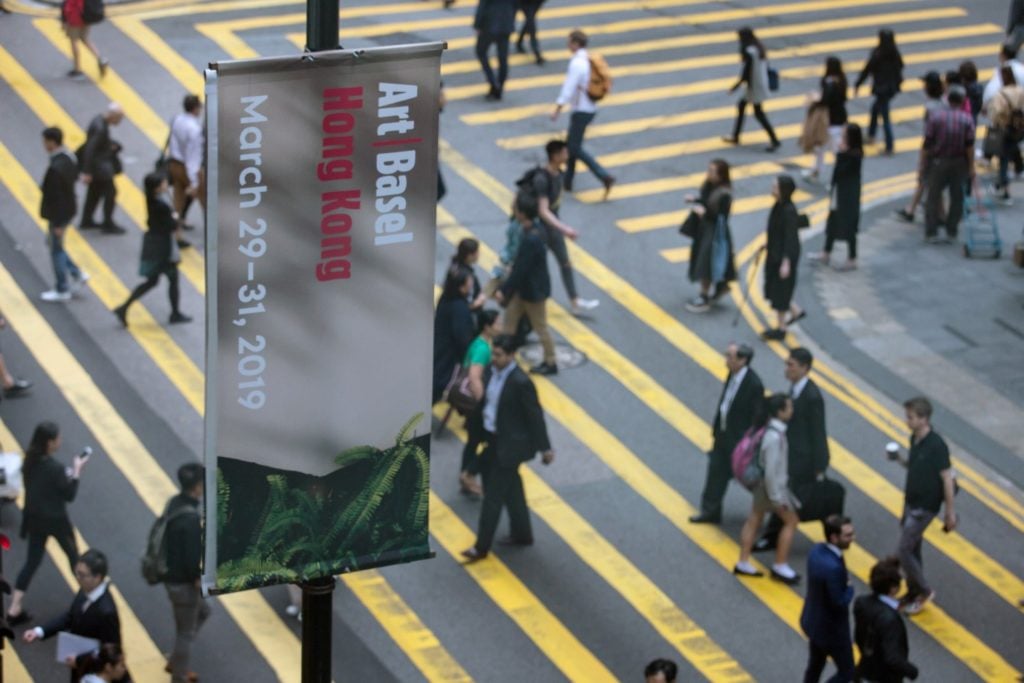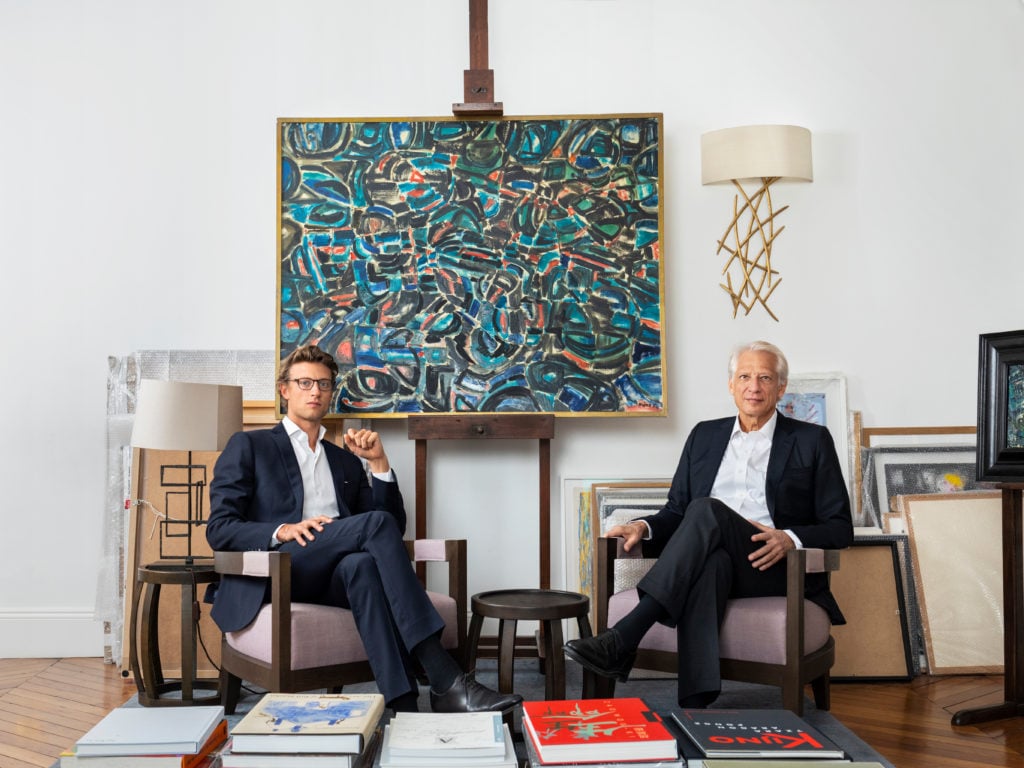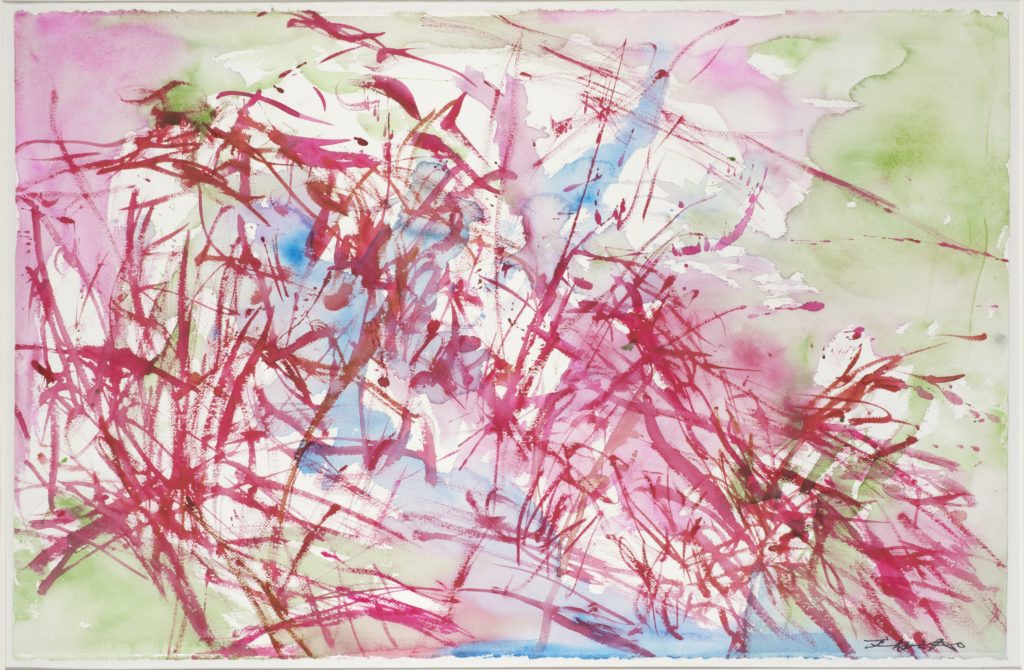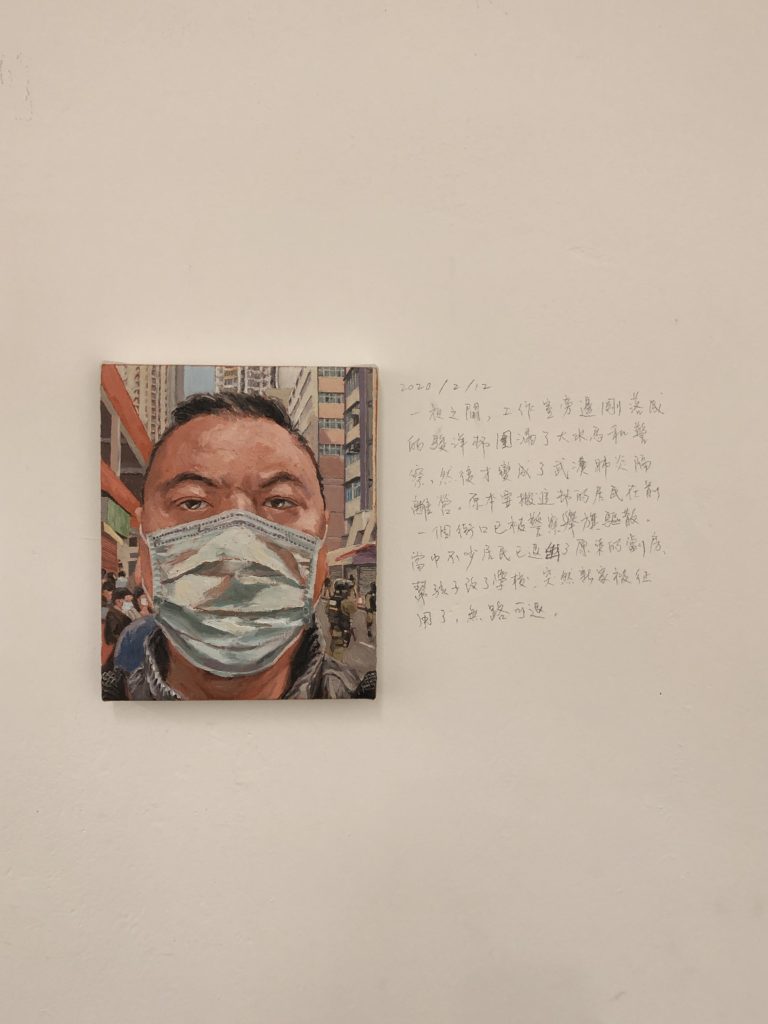Market
As a Star-Powered New Gallery Opens Its Doors in Hong Kong, Asia’s Art Market Sees Glimmers of Hope After a Prolonged Lockdown
Sales are trickling in through Art Basel Hong Kong's digital platform too.

Sales are trickling in through Art Basel Hong Kong's digital platform too.

Vivienne Chow

On Tuesday afternoon, two dozen journalists gathered on Hong Kong’s Hollywood Road for the launch of the new gallery Villepin. Under normal circumstances, a gallery opening would not be unusual. But when the world is devastated by the coronavirus pandemic, bringing people together for the inauguration of a new art space seemed to be not only out-of-sync with the times, but downright risky.
Those who turned up were indeed well aware of the risks and took many precautions. A large bottle of hand sanitizer was placed on the reception desk. Hand shakes were replaced by a wordless Namaste gesture. Everyone arrived with their face masks on while keeping at a distance from each other, including gallery founders Dominique de Villepin, the former Prime Minister of France who has spent 40 years building an art collection, and his son Arthur, an entrepreneur and Hong Kong resident of 10 years. Their faces might have been covered but, after nearly two months of social distancing, the excitement of a reunion with colleagues from the art world in front of the late 20th-century master Zao Wou-ki’s paintings could not be concealed.
Hong Kong’s burgeoning art scene suffered a tremendous blow when the novel coronavirus that originated in Wuhan, China, began to hit the city in late January. Schools have been shut down. Offices and public facilities, including government-run museums, were closed until the beginning of the month. Art Basel Hong Kong and the satellite fair Art Central, which were supposed to take place this month, were cancelled after the World Health Organization declared a global health emergency, on January 31. The cancellation of Asia’s biggest art fair, the biggest occasion of the year for many gallerists to make sales and meet new clients, deeply hurt the industry in the region.
Nevertheless, the father-and-son team decided to press ahead with the opening of Villepin. And nearly two months on, the virus now known as COVID-19 is encroaching Europe and the United States, whereas the plague appears to be coming under control in Asia. The week of the opening of Villepin also saw a few other gallery openings as well as the inauguration of Art Basel’s online viewing room, a digital alternative to the Hong Kong fair. While the art world in the West has ground to a halt, some museums in mainland China and South Korea have started re-opening doors to visitors—with strict precautions—though even that may not last long.
Dominique de Villepin quickly rejected the idea that normalcy had returned. “No one can be safe forever,” he told Artnet News. “A change of attitude and integrating disciplined gestures into our daily life are a must, in order to live a new, better life. And art makes our life better.”
Indeed, shortly after our interview, it was reported that Asia is facing a second wave of outbreak, brought on by those returning from overseas. In just five days, the number of infected cases in Hong Kong shot up by 72 percent, to 317, as of Sunday. Now, both the M+ Pavilion and the Hong Kong Museum of Art have shuttered again after briefly reopening.

Arthur and Dominique de Villepin, 2020. Photo by Sophie Palmier, courtesy of Villepin.
Dominique de Villepin said that the gallery’s inaugural exhibition of works by Zao, titled “Friendship and Reconciliation,” is a timely one.
“There has been an accelerating trend in recent months, which is the trend of nationalism, protectionism, and isolation,” de Villepin said. “That has been the US policy since [Donald] Trump took over, and even before that,” he said, referring to mounting division brought by the country’s border closure and racism amid the coronavirus scare.
“We have to measure the new world that we are facing, to deal with this fear. Of course we should adapt, protect, and be disciplined collectively. But fear should not take the lead. In art, we can find the wiseness, the distance and the questioning that art offers, to help us live through this moment in the best way.”
The exhibition is more than just a presentation of paintings for sale, though Zao has been an auction darling in recent years. It is also an attempt to chart the artistic trajectory of an artist coming to terms with his identity and of the long-running friendship between Zao and the de Villepin family.
“The quest of [Zao’s] life was to find truth in art,” de Villepin said. “Friendship has been a necessity for his creation. He also saw the division of the world, between figuration and abstraction, between East and West. Division should be put on the side in order to give emphasis on reconciliation. It’s a huge lesson that he has given us.”
The reconciliation in Zao’s art, de Villepin said, comes from the fact that the artist belonged to three different art scenes in the 20th and the beginning of the 21st centuries. “First, the Asian scene and the Chinese scene, with his legacy and lineage inherited from ancient Chinese painters. He was also a master of European art, with his influence from Cézanne and Matisse. He also draws references from the American scene, the New York school, the gesture and the speed coming from Rothko and Pollock. He created a new path by reconciling these influences.”

Zao Wou-Ki, Gaudigny (2007). Copyright Zao Wou-Ki, courtesy of Villepin.
On display is a range of rare works, including large-scale oil paintings, watercolors, Chinese inks and lithographs from the late 1940s, when Zao first moved to France from China. These works are more figurative than his signature abstract paintings from the 1970s and his relatively colorful works in the early 2000s. One of the watercolor paintings appeared on the cover of the menu at a dinner reception that de Villepin hosted for then Chinese premier Zhu Rongji in 2002, when de Villepin was France’s Minister of Foreign Affairs.
Rare artist books by Zao from de Villepin’s family collection are hidden in a private viewing room, including a playful watercolor of Napoleon, which was a personal gift from Zao to de Villepin, and the only known self-portrait of the artist. Family photographs with Zao, such as one that saw the teenage Arthur de Villepin posing with the artist, were hung on the walls of the staircase inside the three-story space.
Arthur de Villepin said the gallery is designed like a home to give visitors the feeling of setting foot in an art collector’s home. “Our shows are more personal,” he said. “We hope to create dialogue to bring people together.”
Villepin is not the only gallery trying to make the most out of these troubled times. On Wednesday, the day after the launch, Art Basel’s online viewing room, the digital alternative to the canceled Hong Kong fair, opened to VIPs at 6 p.m. local time. The online iteration featured 235 of the 242 galleries originally slated to appear in the live fair—almost 90 percent.
The first 20 minutes saw an overwhelming influx of users temporarily paralyze the platform. Some optimistic gallerists and collectors interpreted the brief website collapse as a reflection of a global demand to see art from one’s own homes.
Nevertheless, the art market is indeed worrying. The coronavirus scare has caused the global financial market to tumble: the Dow Jones Industrial Average crashed by 28 percent since mid-February after reaching a historic high and the Dow fell by 2,999 points in one day. China, on the other hand, is facing a possible economic contraction, despite its public claims that the disease is under control. China’s National Bureau of Statistics revealed that retail sales fell by 20.5 percent in January and February, and that fixed asset investment plunged by almost 25 percent, compared to the same period in 2019.
“The economic situation has definitely affected collectors,” said Jia Wei of Boers-Li Gallery in Beijing and New York during the virtual media preview of Art Basel’s online viewing room, which was organized by six of the participating galleries. “People are panicking and they do not feel good. Even if they have money to spend on art, the process will be slow. But if the works are good, and we can offer good service, sales can still be made. This is the time for all stakeholders in the art market to work together.”
David Tung, director of Lisson Gallery’s Shanghai outpost and the leader of the virtual media preview, said that the challenging times have presented new opportunities “to innovate and develop new things” such as the online viewing platform. “We intend to treat this as a proper art fair. We have done a lot of experimentation to try what looks best,” he said.

Chun Yeung Estate (2020) by Chow Chun Fai. Courtesy of Gallery Exit.
Anthony Tao of Hong Kong’s Gallery Exit, which is showing in the Art Basel online viewing room and just opened an exhibition of artist Chow Chun-fai’s paintings of the ongoing Hong Kong protests a week ago, said Chow’s new solo show was well-received and had a good turnout. “People have been going through self-isolation for a long while and they really wanted to get out,” he said. “Chow is a well-known artist and the topic of his works are very relevant. The audience is very responsible, wearing masks and keeping a distance from each other.”
The market is challenging and sales could be slow, especially for emerging artists, Tao said, “but this digital platform will likely remain. It can be a very effective addition to the actual fair when it returns to Hong Kong next year.”
Sales have reportedly been slow during the VIP days of the online viewing room, but Hauser & Wirth said it sold eight works on the first VIP day to collectors from both Asia and Europe, including those by Josef Albers (for $600,000), Jenny Holzer ($350,000), Pipilotti Rist ($140,000), and three by Paul McCarthy ($274,000 to $300,000).
“Honestly, I think we’ve done quite well given the circumstances. We had no presales and only a few inquiries last week,” Iwan Wirth said in a statement. “We’re seeing more engagement from Asia come through both our own and Art Basel’s platforms which leaves me confident for our higher value works. The Guston is already on hold. Stay tuned. Much is being said about digital: It is just the new norm. We’ve done it for years and it shows, our clients use it.”
Despite a series of challenges from political turmoil to the coronavirus outbreak, some still have faith in Hong Kong. Art Basel has pledged to return on March 25 to 27, 2021.
And Arthur de Villepin said his new Hong Kong gallery is a long-term commitment: “Geographically, Hong Kong has a strategic location being in the center of Asia-Pacific. And the city’s vibe and energy are something you cannot experience anywhere else in the world.”